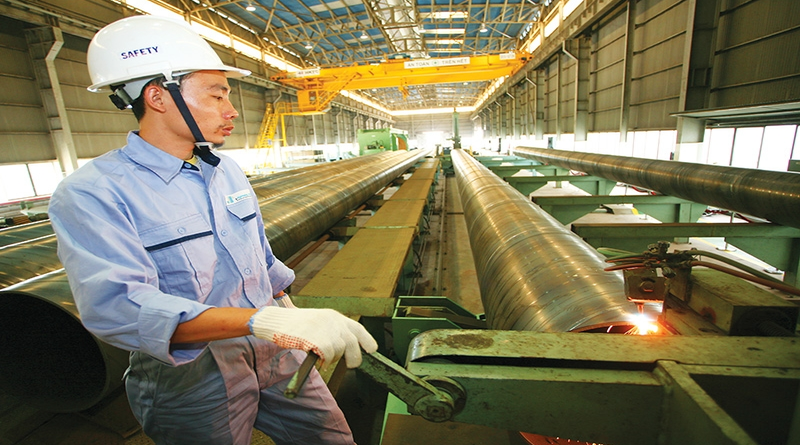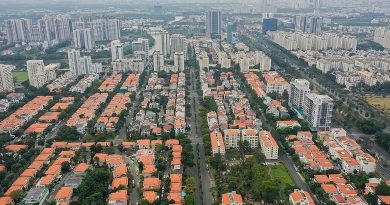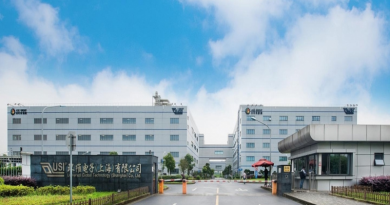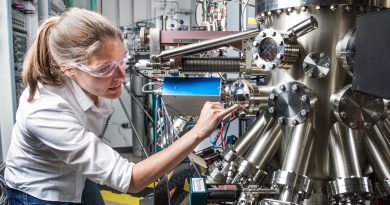Japanese companies enticed by local investment climate
Driven by new encouraging policies and motivations, more fresh opportunities will be coming for Japanese investors in Vietnam, expecting a new investment wave ahead.
Having been present in the country over the past 25 years, Watanabe Yutaka, director of TOWA Industrial Vietnam, is impressed with the improvements in the business climate. Now the successful control of COVID-19 is giving his company more confidence in making its next steps.
“Vietnam has more advantages than other regional countries in investment attraction. The cost of the manufacturing sector in China and Thailand remains high. Economic activities globally are on a downtrend, while investments are gearing up,” he said at the Ministry of Planning and Investment’s (MPI)webinar on Japanese investment promotion last week, which attracted over 1,000 Japanese companies.
TOWA Industrial Vietnam specialises in manufacturing precise mechanical spare parts. It built the first factory in the country in 1996, a second 10 years later, the third in 2012, and has been operating a fourth since last year.
“We are restructuring our supply chain. Some of our facilities suspended operations in China, Indonesia, and India, and we are considering moving operations to other countries. Vietnam is a safe destination for us,” Yutaka elaborated.
New wave
According to the Japan External Trade Organization (JETRO) Hanoi Office, there has been a trend of reshuffling supply chains among Japanese businesses amid COVID-19 and global trade tensions.
As shown in a quick survey on nearly 2,000 Japanese companies in Vietnam by the JETRO carried out last month, 1 per cent had already moved their activities to Vietnam from China, while 5 per cent are considering. Meanwhile 4 per cent are mulling over an investment shift to Vietnam from other countries.
Nakajima Takeo, chief representative of the JETRO Hanoi Office said, “Vietnam has advantages to attract Japanese investors because of successful control of the pandemic, low labour costs, abundant labour force, the signing of free trade agreements, and increasing position in the region.”
In this trend, TOWA Industrial Vietnam is among the Japanese companies that have had plans to make investment shifts. Olympus, Nintendo, JUKI, and Sharp also have made similar moves.
Sharp, one of the leading conglomerates in Japan, is going to open its new factory in the outlying district of Ho Chi Minh City this year. It will focus on manufacturing car displays for the US market, as well as air cleaners for domestic use. Sharp has achieved great success in Vietnam over past years on the back of local annual electronics and household appliance growth of 10-15 per cent.
The company is one of the typical examples for successful Japanese investment in the Southeast Asian country.
Similarly, Japanese electronics manufacturer Olympus ceased activities in China in 2018 and is focusing on the production of digital cameras in Vietnam’s southern province of Dong Nai, while Nintendo relocated a part of its Switch console production to Vietnam from China.
Japan’s investment shifts have evolved over several decades now. At the turn of the century, supply chain restructuring was aimed at reassessing the excessive focus on China amid rising labour costs, mounting competition, tightened rules, and technology leaks. In 2018, moves were made to ease possible negative impacts from trade tensions. And this year, groups want to develop and diversify supply chains to adapt to the COVID-19 outbreak, global economic slowdown, and digital transformation.
In addition to the processing and manufacturing sector, which is of most interest among Japanese investors in Vietnam, infrastructure and equitization of state-owned enterprises (SOEs) are already attracting strong attention for their future plans, making it an attractive channel for financiers.
More fresh opportunities for Japanese investors will come in the coming months because a number of powerful SOEs will have their stake holding divested, including Vietnam Posts and Telecommunications Group, as well as at many commercial lenders such as Agribank.
In infrastructure, the eastern cluster of the North-South Expressway will have five sections developed under the public-private partnership (PPP) model. The country is also calling for investment in renewable energy projects, especially in solar and wind power, thus hoping to bring new opportunities for Japanese enterprises. Looking ahead, the Vietnamese government is encouraging innovations and digital transformation with a number of supporting policies.
And the landmark EU-Vietnam Free Trade Agreement (EVFTA) will take effect imminently, bringing about important legal changes and special incentives for international ventures which have exports to the bloc.
Okabe Daisuke, from the Japanese Embassy in Vietnam, proposed to soon resume flights between the two countries, improve disbursement quality of public investment, develop transport infrastructure, add investment incentives, and offer more transparency in policies.
 |
New motivations
In anticipation of investment shifts globally, Vietnam is preparing to welcome a new wave of high-quality foreign direct investment (FDI), including that from Japan by continuing administrative reform, focusing on advanced technologies with high-added value and connecting with global supply chains.
“We are making careful preparations to welcome multinational corporations that are planning to make investment shifts. We encourage them to open research and development centres, and establish operation regional centres in Vietnam,” said Vu Dai Thang, Deputy Minister of Planning and Investment.
The Southeast Asian country is expected to have a more competitive and favourable legal environment, thus increasing transparency and facilitation for investors in the months to come with the recent issuance of a number of laws, including new laws on investment, enterprises, PPP, and others.
In addition, the country is also to focus on infrastructure development, improvement of human resources, development of supporting industries and financial tools, and enhancement of administrative reform to welcome new investment flows.
“We are working with localities on preparation of land funds at industrial zones in the localities which attract more Japanese investors. We also propose an increase in land funds to facilitate their business and investment activities,” said Do Nhat Hoang, director general of the MPI’s Foreign Investment Agency.
Also importantly, Vietnam aims to have developed supporting industries under Resolution No.23-NQ/TW dated 2018 on the orientation of industrial development by 2030, with a vision for 2045. The government has already issued Resolution No.58/NQ-CP on the action plan to implement Resolution No.50-NQ/TW dated August 2019, governing the directions on completing the policies on FDI attraction by 2030.
“We have set up a working group to consult the prime minister with the new policies on FDI attraction, with members who are leaders of ministries and agencies. Many more Japan desks have been also established to support their investment inflows in Vietnam,” Hoang noted.
According to the MPI, amid global fall in FDI attraction, Vietnam saw some positives in June’s FDI picture with $1.8 billion in newly-registered, newly-added, and stake acquisition capital, up 3.1 per cent on-year, and 14.9 per cent on-month. As of June 20, Japan was Vietnam’s second largest foreign investor, with 4,548 valid investment projects, registered at over $60 billion.
Source: VIR











